Oscars So Green
Our environmental analysis of the 2017 Best Picture nominees
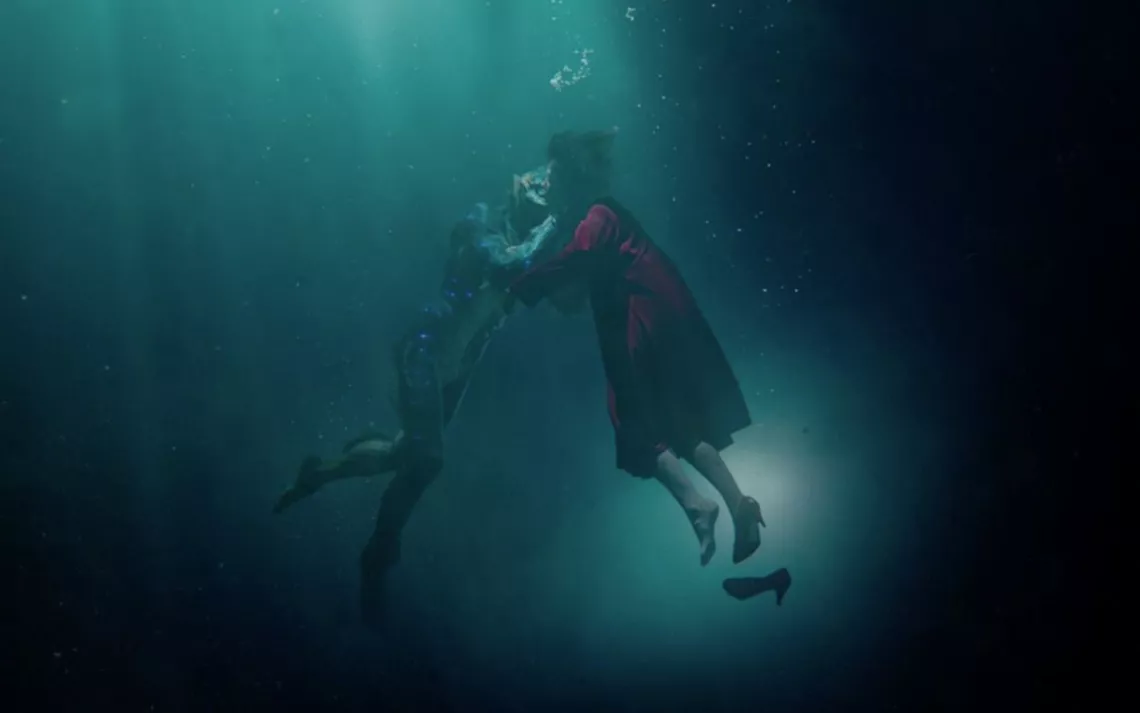
In 2017, there weren’t any obvious environmental themes among the Oscar nominees for Best Picture—nothing like Moonlight, which made the Florida coastline seem magical, vast, and democratic in its embrace of people looking for a little space to try out new, fragile identities. Who could deny public coastal access after seeing a film like Moonlight?
This year, the greenery is a bit more subtle, but that didn't stop our quest to find it. Here’s what we found.
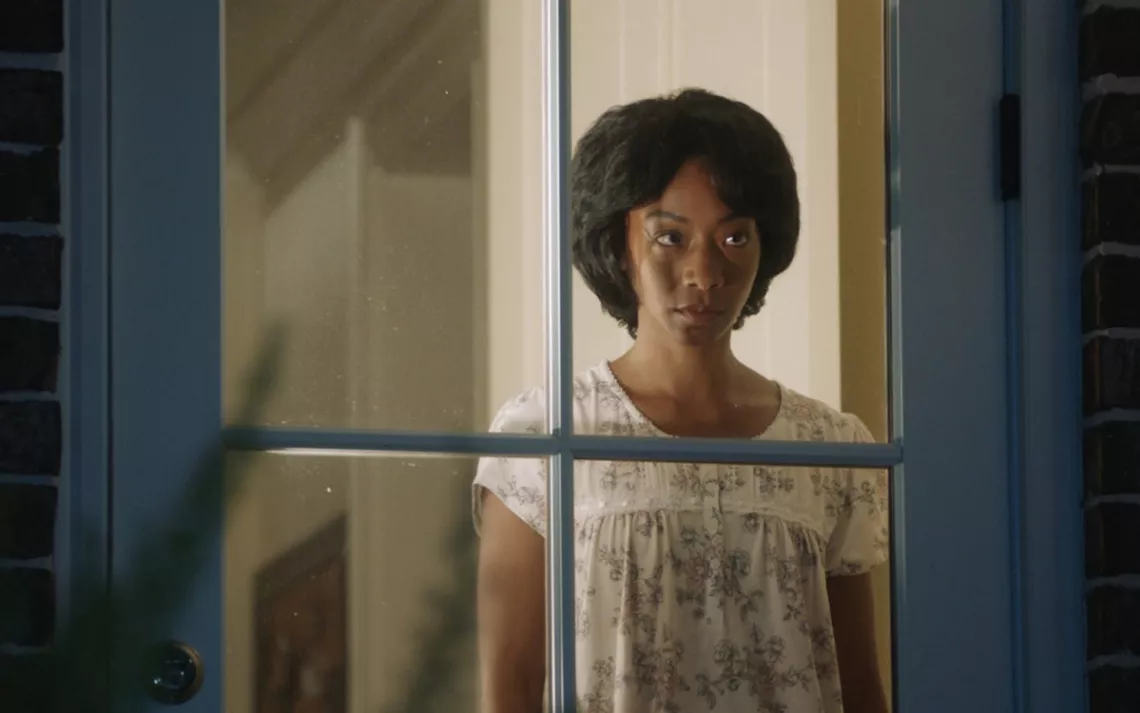
Get Out
Before we even meet the protagonist of Get Out, we meet the suburbs: leafy, dark, and very, very quiet. In another movie this would be the backdrop to some paunchy suburban dad, out for a run, contemplating infidelity and/or mortality.
But we’re clued in quickly that this is a movie about the suburbs as a literal menace, not just some-nice-but-boring place that you move to because you want more bedrooms and a backyard but then you have ennui. From the very beginning of the film, Chris, an African American city-dwelling art photographer headed out to the 'burbs for the first time to meet his white girlfriend’s family, is warned by his best friend to never go to the suburbs, for any reason.
These warnings are more than just paranoia. Even if the plot of Get Out is as loopy as a horror film can get, the danger that white suburbs pose to people like Chris is very real.
The suburbs as we know them have their origins in the 1930s, when the Federal Housing Administration created a new class of federally backed loans—loans that would take America from a country of mostly renters to mostly homeowners. The Feds refused to insure mortgages in and near African American neighborhoods (a practice known as "redlining") but happily subsidized loans in white neighborhoods—including neighborhoods that explicitly banned residents from reselling, leasing, or transferring their new homes to black people. This happened to be most neighborhoods.
Both covenants and redlining were rendered illegal by the Civil Rights Act of 1968, but the sentiments that created them in the first place didn’t go anywhere. It’s like America’s cities were paragons of racial tolerance, but in enabling total segregation, the suburbs have helped generations grow up without acquiring the basic civic skills for sharing space with people different from themselves. Kids like Get Out’s director, Jordan Peele—biracial, NYC-raised—are the exception rather than the rule.
The real-life results are just as much of a horror movie as Get Out—like the story of Renisha McBride, shot by a paranoid homeowner in a Detroit suburb when she knocked on his door looking for help after a car accident. We watch Get Out not wondering whether or not the suburbs are terrifying, but when and how they will reveal themselves for what they are. —Heather Smith, news editor

The Shape of Water
Thirteen-time Oscar nominee The Shape of Water’s title comes from Plato’s notion that in its purest form, water takes the shape of an icosahedron, or a 20-sided polyhedron. As such, the film suggests that humanity, and beauty, have many various faces. This Cold War–era love story about a mute orphan and a reptilian-yet-also-human creature—alternately described as “man,” “fish,” and “Amazonian deity”—admonishes viewers not to prejudice against, or consider “less than,” those who don’t adhere to societal norms.
More compellingly, though, The Shape of Water artfully explores the toll that industrial progress tends to take on both wildlife and indigenous culture. It’s the story of a lonely janitorial cleaning woman, Eliza, who works the graveyard shift at a military laboratory facility that performs animal experiments. Her sadistic and bigoted boss has recently scoured the Amazon to bring in a creature—the water-dwelling creature with whom Eliza falls in love over the course of furtive visits to the lab, and which her boss, the villain, terms “the asset.” (The creature’s multiple breathing systems are being studied for their potential military applications.) When her employer’s nefarious plans become clear to Eliza, she does everything she can to save the displaced and abused creature from such a bellicose fate.
What’s more, this otherworldly and visually fantastical film’s color palette leans heavily on wildlife conservationists’ favorite color—from green’s muddy to kelly to emerald to neon incarnations. Through and through, The Shape of Water is a feast for environmentalists’ eyes—and morals. —Katie O’Reilly, adventure + lifestyle editor
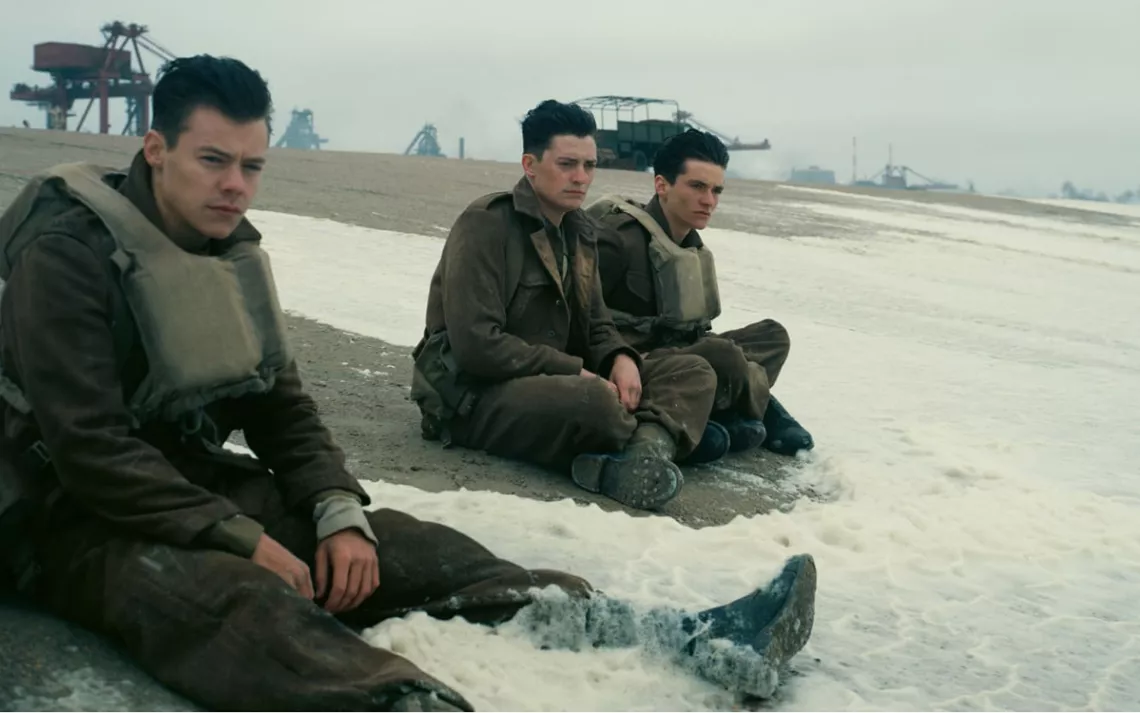
Dunkirk
Unlike most war movies, which tend to be stuffed with sentimental homefront scenes, stern-looking generals drawing up strategies around big tables, sentimental B plots, and explicit lessons about pain and perseverance, Christopher Nolan’s treatment of WWII’s 1940 Battle of Dunkirk largely avoids the sweeping historical portrait. Rather, it turns its lens almost exclusively on the natural world—the film oscillates among scenes depicting soldiers fighting on the sea, in the air, and on the ground; in this case, a breathtaking French beach. In terms of scene-setting, these unadorned sets do all the heavy lifting—locations and time periods are occasionally announced onscreen, but ultimately it is the merging of natural spaces that serve to underline the vastness of the seemingly unending fight that was the Second World War.
Interestingly, the film never even shows any Nazis, but merely acknowledges that they and their artillery lie in wait over the hills, high up in the sky, and in the sea deep beneath Allies’ U-boats—they’re presented as less of a traditional enemy and more of an existential threat. In that vein, the film reminded me of humanity’s battle against the vague-yet-multifaceted-yet-ubiquitous enemy that is climate change. And while the Allied forces are ultimately victorious in Dunkirk, the viewer witnesses no “winning.” —K.O.

The Post
In 1971, the Washington Post, the capital’s local paper, was struggling financially and unable to compete with big-league newspapers like its rival, the New York Times. Then the Times broke the story of the Pentagon Papers—a damning, 4,000-page, top-secret study that detailed how the highest levels of government had misled the public on the Vietnam War for decades. In response, the U.S. government served the Times an injunction to stop reporting on the study, and the Washington Post found itself at a critical juncture. Would it take up the baton and publish its own report, risking the wrath of the government and possibly scaring off potential investors?
The film The Post, directed by Steven Spielberg, draws viewers deeply into this tension. The Pentagon Papers are an almost irresistible scoop, but one that also threatens the very existence of the newspaper. The story serves as a pointed and timely reminder of the essential role of a free press in a democracy. “The only way to assert the right to publish is to publish,” says the Washington Post’s executive editor, Ben Bradlee, who is played by Tom Hanks.
The Post is also a portrait of decent people forced to make moral decisions under intense pressure. The owner of the Washington Post, Kay Graham (played by Meryl Streep), unexpectedly inherited the newspaper after her husband’s death. The circumstances demand that she step out of her comfortable role of socialite and decide what her convictions are, then find the courage to express them to men who constantly talk over her.
Now, when decades of environmental protections are being ruthlessly dismantled for the benefit of a few, this message resonates. Like Kay Graham, we can’t afford to have hang-ups. The moment demands that we act on our convictions. If we take this message to heart, we—along with a press that, fortunately, is still free—might be able to hold the Trump administration in check. —Wendy Becktold, associate editor
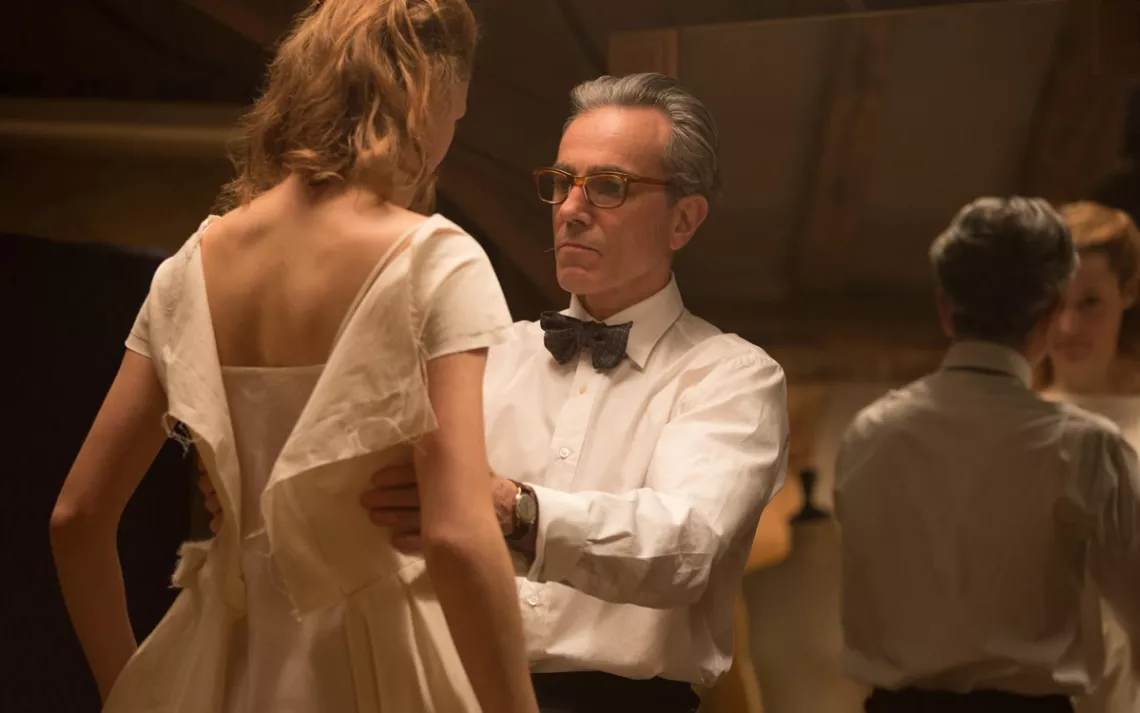
Phantom Thread
In Paul Thomas Anderson’s Phantom Thread, Daniel Day-Lewis plays a character for the ages, one Reynolds Woodcock, a persnickety couturier whose rigidity mirrors the repression of 1950s London. But where other love interests were cast aside for disrupting his breakfast, Alma, deftly brought to life by Vicky Krieps, knows his number. As she waits on him in a country restaurant, he forces her to remember his hefty order, even after she writes it down. She executes it perfectly, so he swift-boats her back to London, to the House of Woodcock horrors, where she models beautiful dresses for royalty while becoming keenly aware that Reynolds is a fascist prick. But she is in love! What to do in such a situation but [SPOILER ALERT] poison someone into submission? Er, what? While out foraging for mushrooms one afternoon in the English countryside, Alma finds some caps that will lay Reynolds low, away from his fastidious routine for a few days, and she can finally take care of him the way she wants to, shooing everyone else in his life away. In a wonderfully weird twist ending, which encapsulates the dynamic of the relationship, the mushrooms become a catalyst to a lasting love between them.
We can’t say for sure if John Muir would approve of Alma’s use of the natural world to coerce someone’s behavior. We do believe JM would abide by this mantra: Explicit consent must be verbal, noncoerced, continuous, informed, and freely given. We are pretty sure Muir wouldn’t give two figs about London high fashion, or the idea of “chic.”
He would, however, painfully empathize with Reynolds's need for assiduous routine, as Muir was also someone who inspired many, simply by going about his life the best way he saw fit. And lastly, it seems as though one of the most quotable lines from Phantom Thread, “Whatever you do, do it carefully,” could be taken from a Muir memoir, especially one such as Steep Trails, where Muir opines the idea “Go quietly, alone; no harm will befall you.” —Carly Nairn, editorial fellow
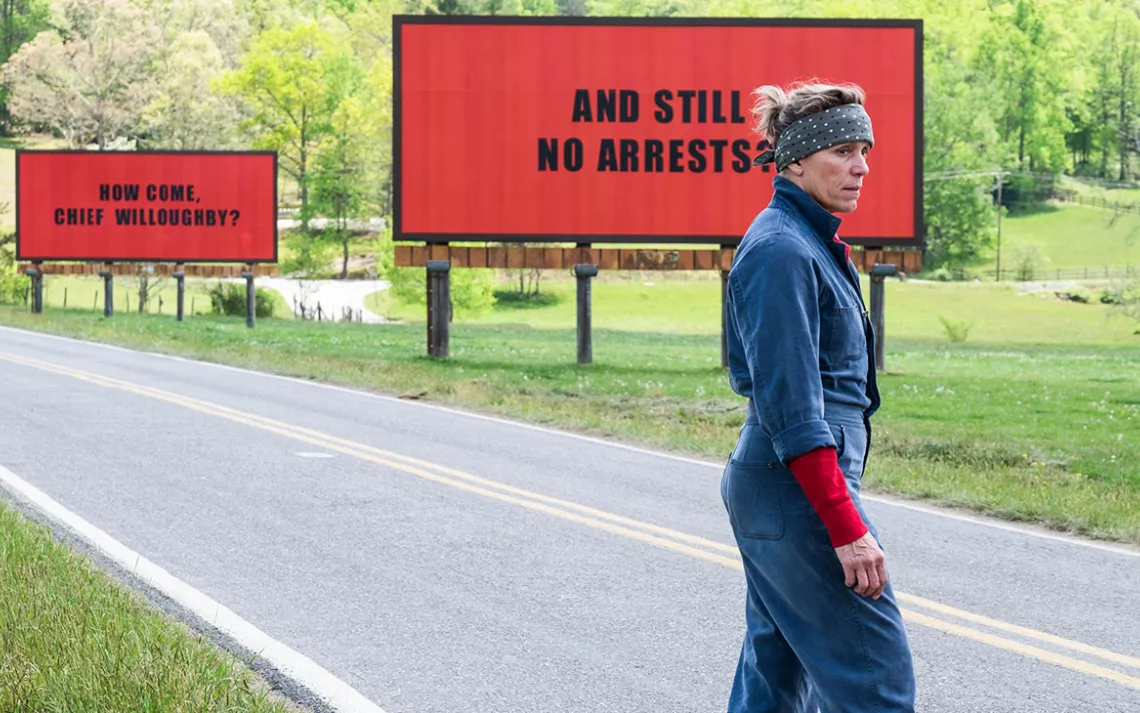
Three Billboards Outside Ebbing, Missouri
A teenage girl is brutally raped and murdered. Several months pass and the local cops fail to make any progress on the case, so the girl’s mother rents three billboards outside of her small, fictional town, and use them to indict its police chief: “Raped While Dying,” reads one. Next, motorists come across one beseeching “And Still No Arrests?” followed by “How Come, Chief Willoughby?” Three Billboards is a movie about a woman fed up with the world’s injustice in general, and more specifically, her own town’s—and dogged environmentalists will likely appreciate Mildred Hayes’s (Frances McDormand’s) unorthodox foray into citizen activism. Yes indeed; think globally, act locally. Plus, there’s some topical dark humor in one of the first scenes, when a cop tries to tell a man hired to paint the billboard that his products are presenting an “environmental concern.” The painter points out that the real “environmental concern,” of course, involves the billboard’s contents.
Between the film’s prejudiced cops, Mildred’s almost fascist impulse to achieve total and perfect justice, and the many on-screen depictions of discrimination based on sexuality, disability, and race, this film is chock-full of prescient political flashpoints. Though Three Billboards has come under (warranted) fire for its portrayal of the redemption and humanization of its marquee racist cop, social and environmental activists everywhere will appreciate the ways in which this Best Picture nominee shows just how tough, complicated, and dehumanizing the quest for justice can be. —K.O.
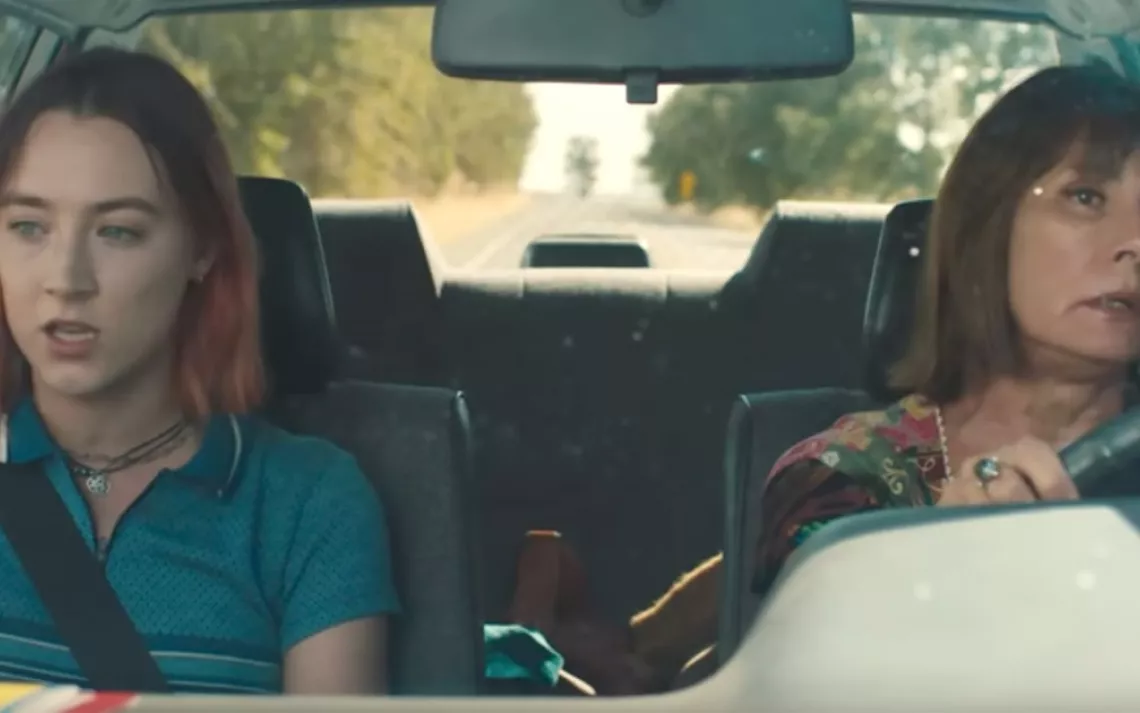
Lady Bird
There’s a moment at the end of the film Lady Bird where our disaffected teenage protagonist calls her mother and delivers a stream-of-consciousness ode to how the way she saw Sacramento changed when she learned how to drive. It’s the kind of scene that only a child of the suburbs could have written, because when you live in the 'burbs, driving is a stand-in for everything adult. The freedom that driving gives you becomes a proxy for larger freedoms that you can’t quite imagine yet.
A child’s relationship to their mother is sometimes called “the debt that cannot be repaid,” but the child of suburban parents racks up not only that debt but also the debt of being chauffeured everywhere: to school, to work, to drama club. Most of Lady Bird’s interactions with her mom happen in the car and while some of those interactions are happy and many of those interactions are revealing, through it all the two are like convicts in some caper movie handcuffed together—but by a combustion engine rather than some old-timey ball and chain.
Greta Gerwig, the film’s director, is upfront about the film’s autobiographical tendencies, and she sees the settings of suburban youth with the eye of an insider: the parking lot that kids drive to and hang out in, the late-night diners with their massive vinyl booths. The scene when [SPOILER ALERT] Lady Bird gets dropped off at the Sacramento airport by her parents and is next seen emerging from a Manhattan subway stop will also be familiar to suburbanites who find themselves, for the first time, in a city where everybody lives on top of each other and no one needs a ride to the airport.
Filmed through the window of a moving car and coated in buttery-yellow light, suburban Sacramento looks like a not-unpleasant dream. But by the end of the movie, our protagonist has become a subway-riding pedestrian, with a new strut in her step. —H.S.
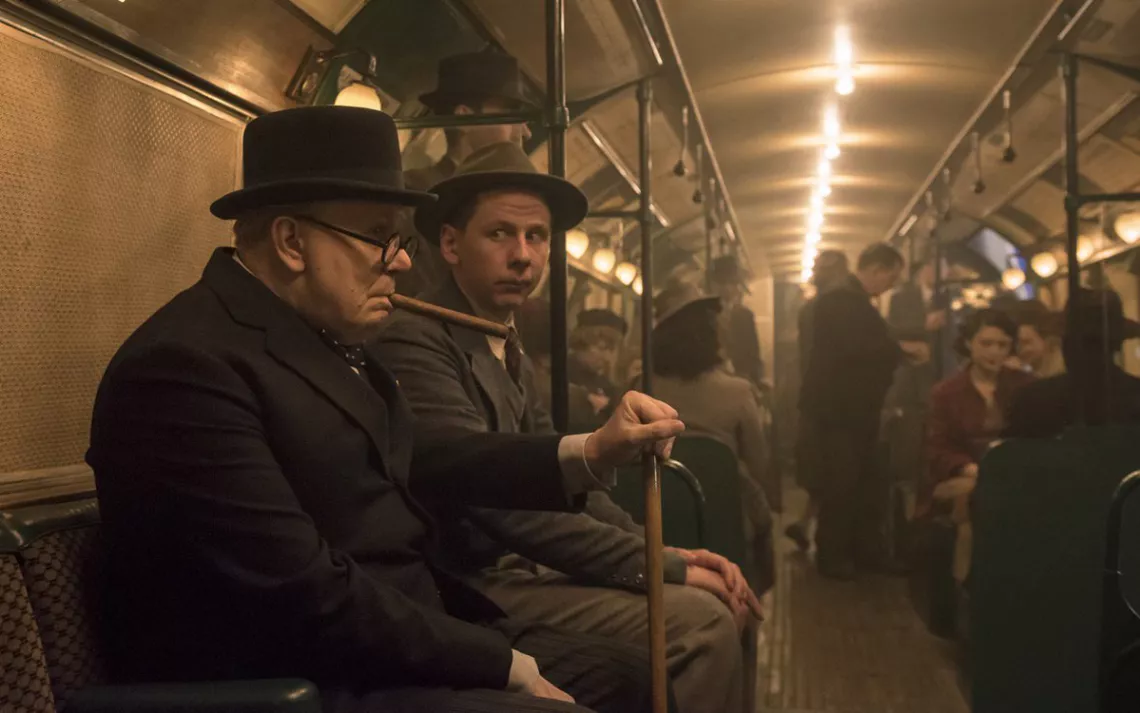
Darkest Hour
It seems obvious, through the lens of history, that Great Britain's decision, in the spring of 1940, to stand up militarily to Hitler was the right one. The film Darkest Hour, directed by Joe Wright, plunges viewers into the precarious time when it was not obvious at all.
At the start of the film, Hitler has just taken over most of Europe. England has been caught unawares—the denial of its politicians is partly what has allowed Hitler to advance unhindered to the country’s doorstep, and now they must decide whether to negotiate a peace deal from a disadvantaged position or potentially lose their entire army—300,000 British troops are stranded in Dunkirk, France, as the Germans’ superior military approaches. Winston Churchill, who is played by Gary Oldman, becomes prime minister at just this moment, and the weight of the world literally seems to rest on his irascible, unapologetically alcoholic shoulders.
Churchill is a flawed and unlikely hero, but he’s one of the few who have had no delusions about Hitler, and he has been sounding the alarm for years. Despite the enormous risks, he argues against a peace deal. “You can’t negotiate with a lion when your head is in its mouth,” he shouts in one heated exchange.
Through stirring oratory, Churchill rallies his countrymen to battle without really knowing whether or not it’s already too late, without knowing whether Hitler can be stopped. Ultimately, he decides, it would be better to fight and lose than to not fight at all.
Now, when climate change is the lion at our doorsteps, Darkest Hour is a good reminder that none of us needs to be a perfect hero. We just need to be willing to tell the truth to those still fiddling with denial. Each of us needs to find our inner Churchill, and galvanize others before it’s too late—even if it’s already too late. It’s the only viable response. —WB
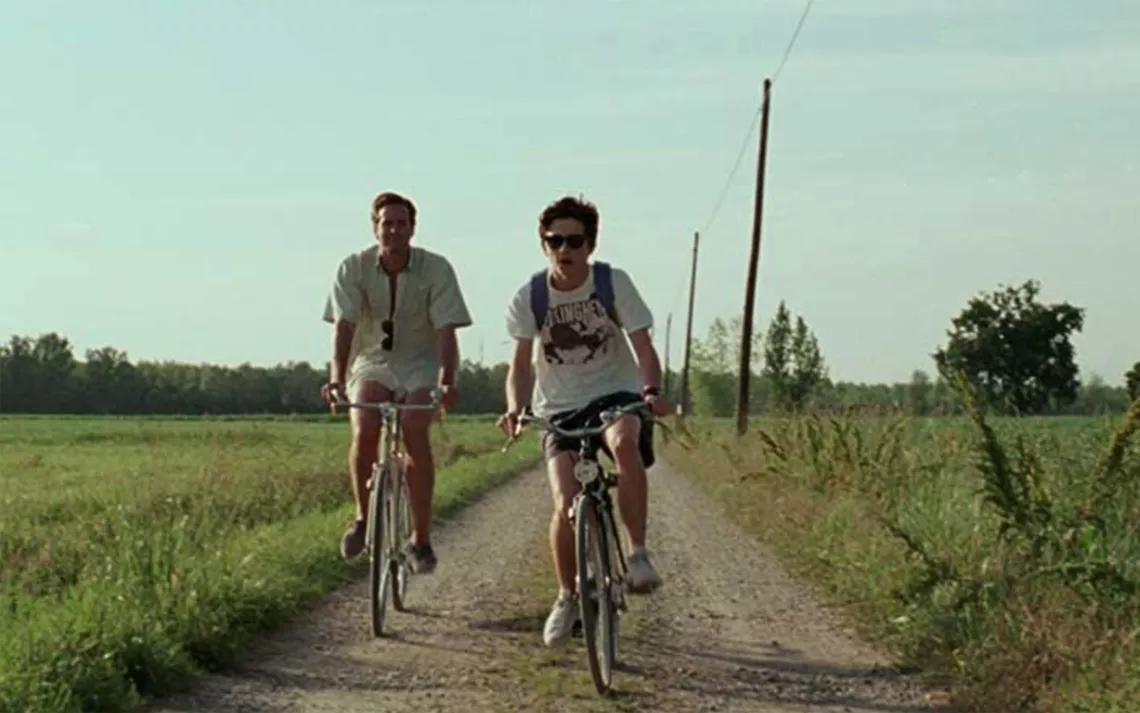
Call Me by Your Name
It is a truth universally acknowledged by the dudes I went to high school with that a car (or even better, a truck) is a necessary courtship accessory for navigating the choppy waters of teenage romance. I went to Call Me by Your Name expecting a lifestyle magazine disguised as a movie—one where everyone speaks six languages (mostly for flirting, sometimes for poetry) and where everyone has free time and access to someone’s villa (even if they don’t own one personally). Instead, I found the greatest specimen of sexy bicycle courtship in modern cinema.
Director Luca Guadagnino and cinematographer Sayombhu Mukdeeprom have arrived at an essential truth: When your lovebirds aren’t sitting in a car, their legs are out there in the world, free for the ogling. In the scenes where Armie Hammer and Timothee Chalamet pedal their '80s road bikes into town, bantering all the way, one could easily see Hammer’s well-defined calf muscles calling down a Best Supporting Actor nomination.
Would Oliver and Elio have had their [SPOILER ALERT] awkward moment of truth outside the war memorial if they had to struggle to find parking first? If they weren’t always thirsty after biking in the heat, constantly remembering how thirsty they were for each other? I doubt it. Add a classic train departure scene so romantic that you wonder why anyone bothers driving away from their summer crush in a car, and you’ve basically got an advertorial for low-carbon transportation, disguised as an Oscar-nominated picture. —H.S.
 The Magazine of The Sierra Club
The Magazine of The Sierra Club







